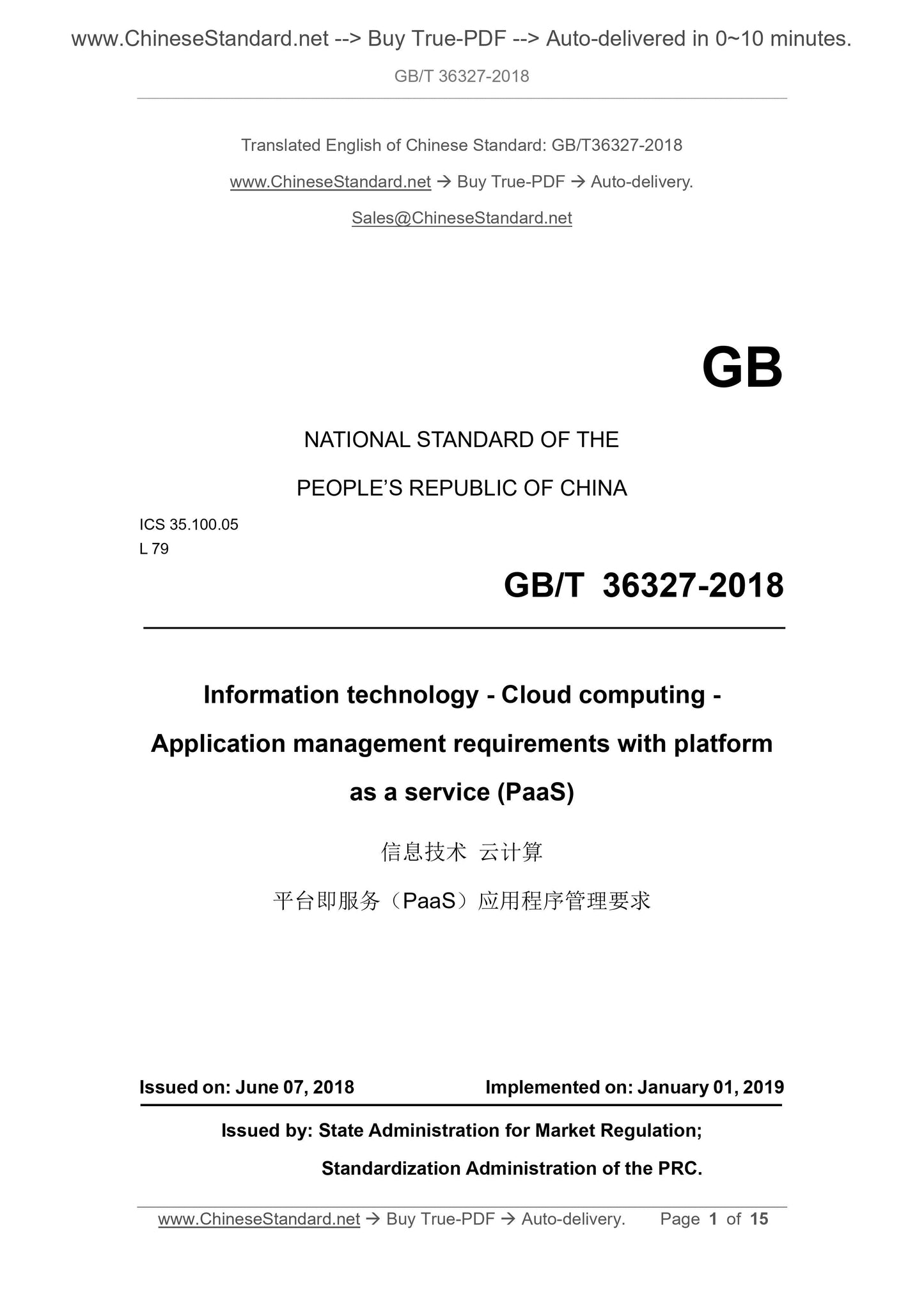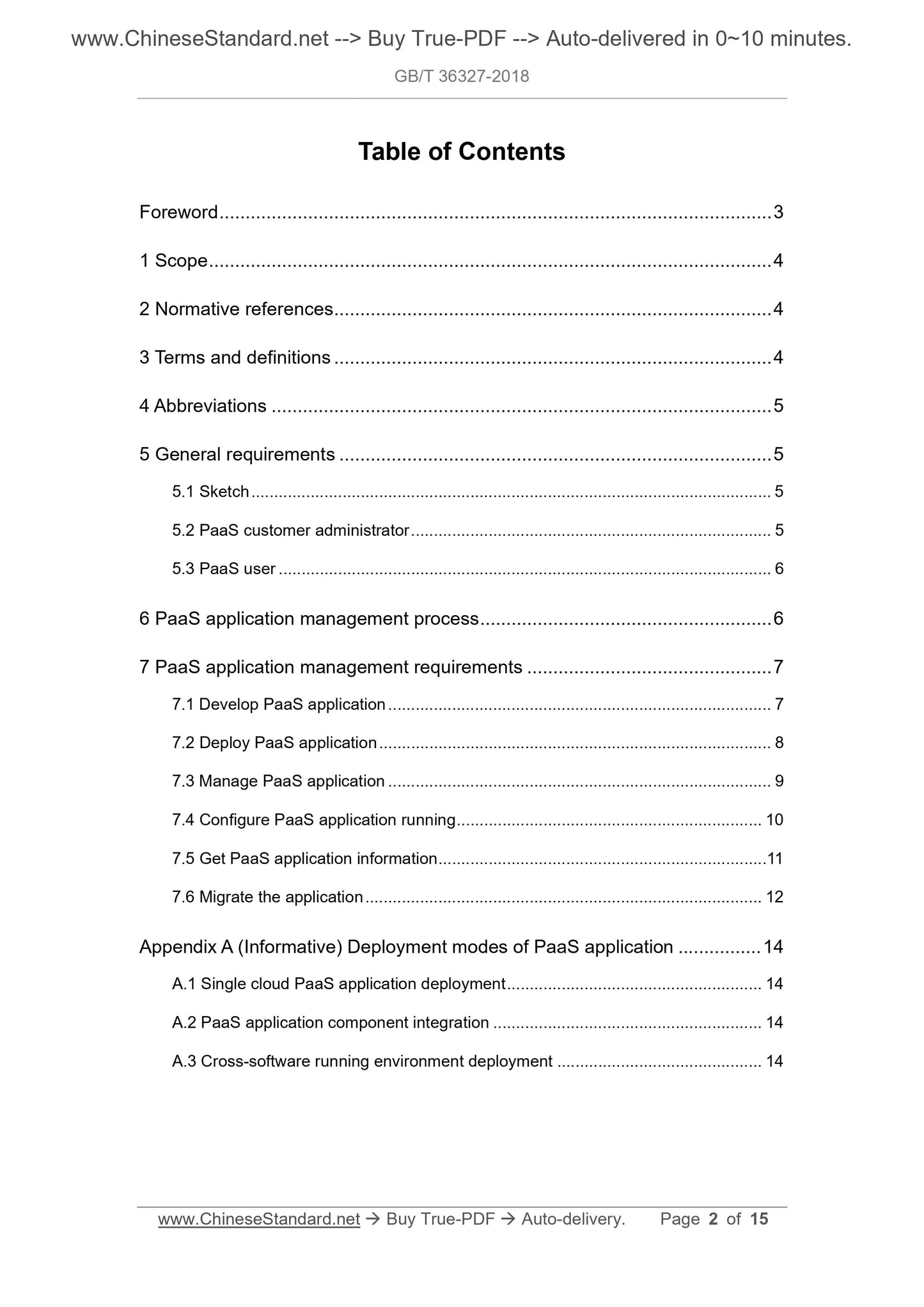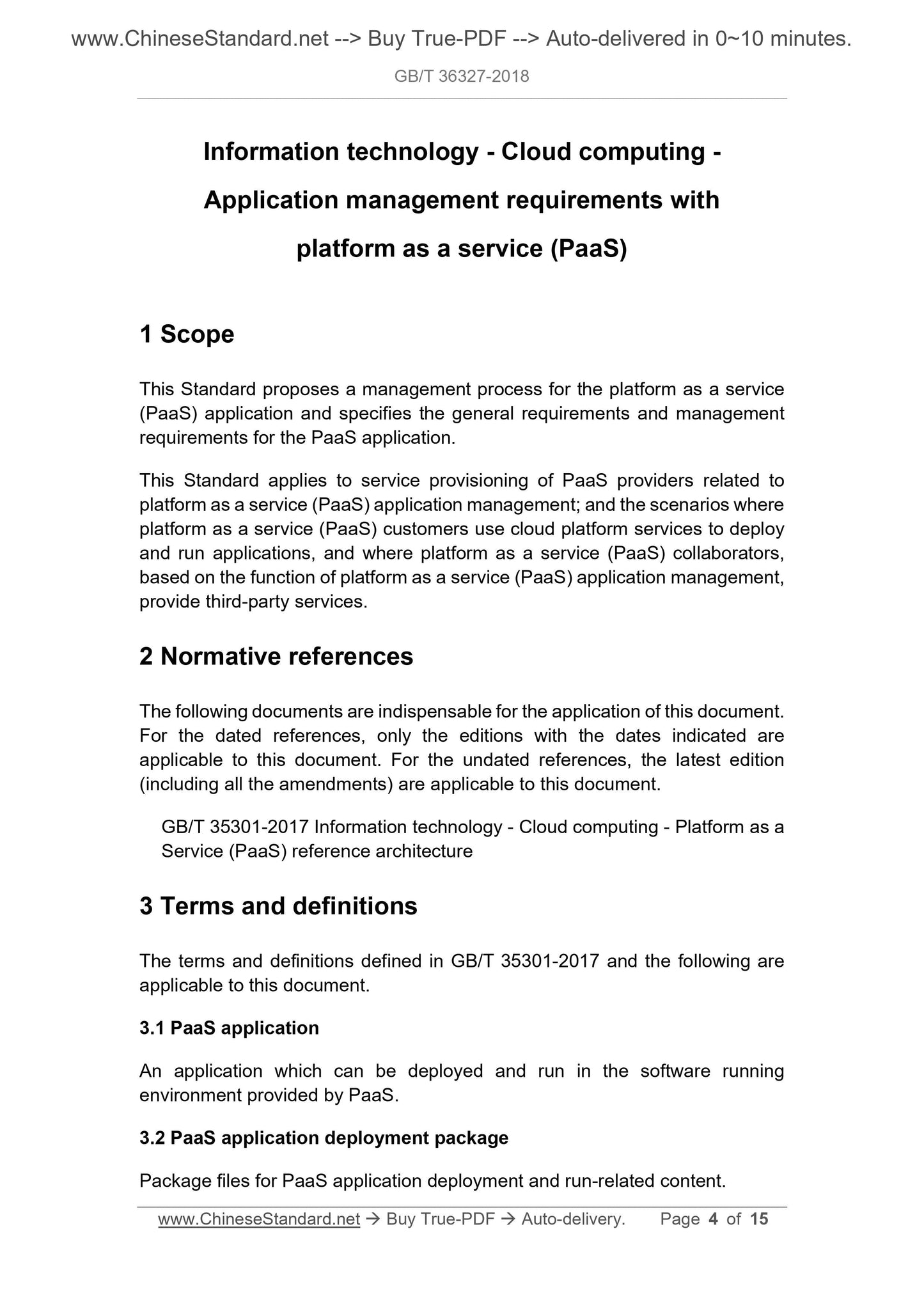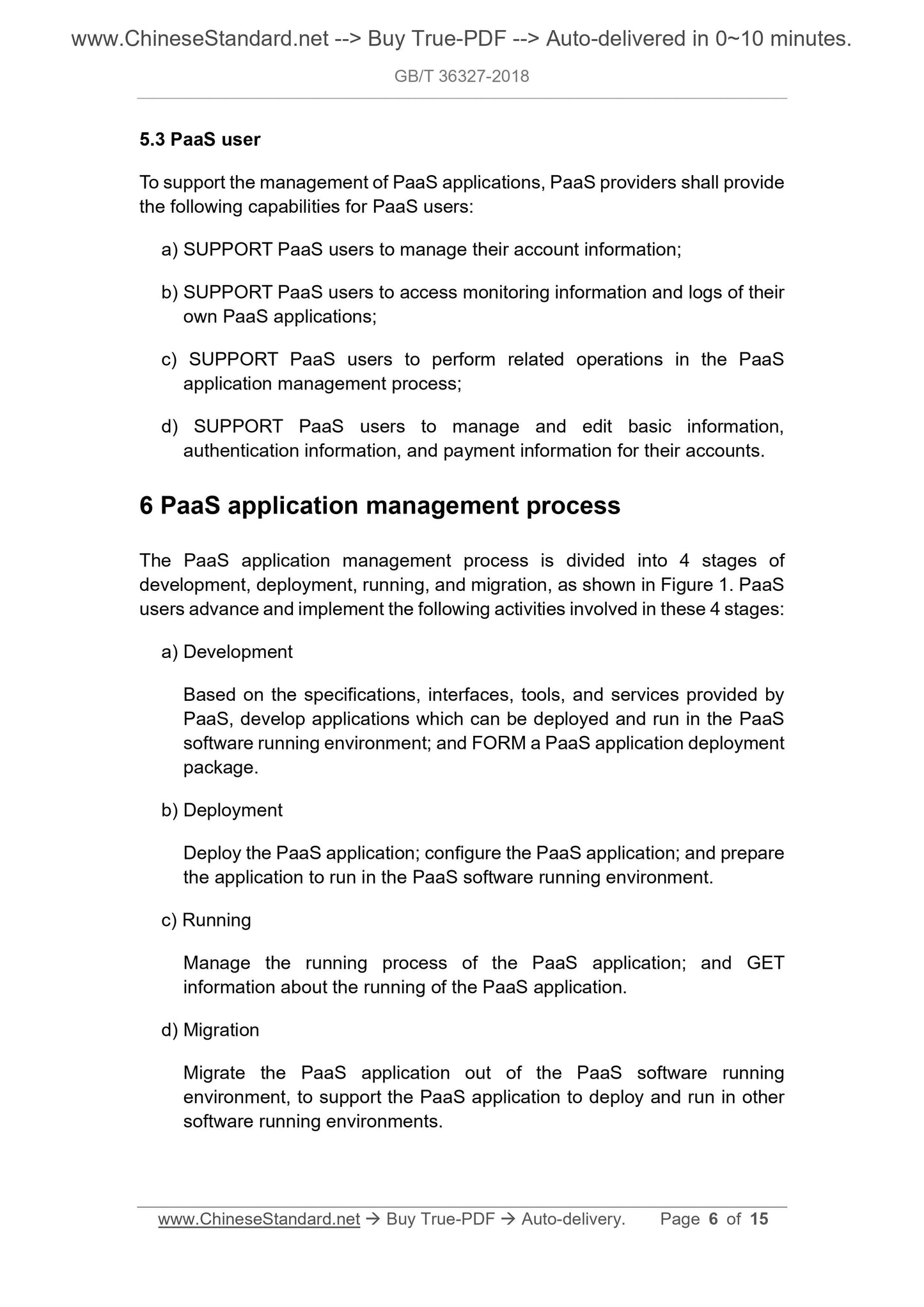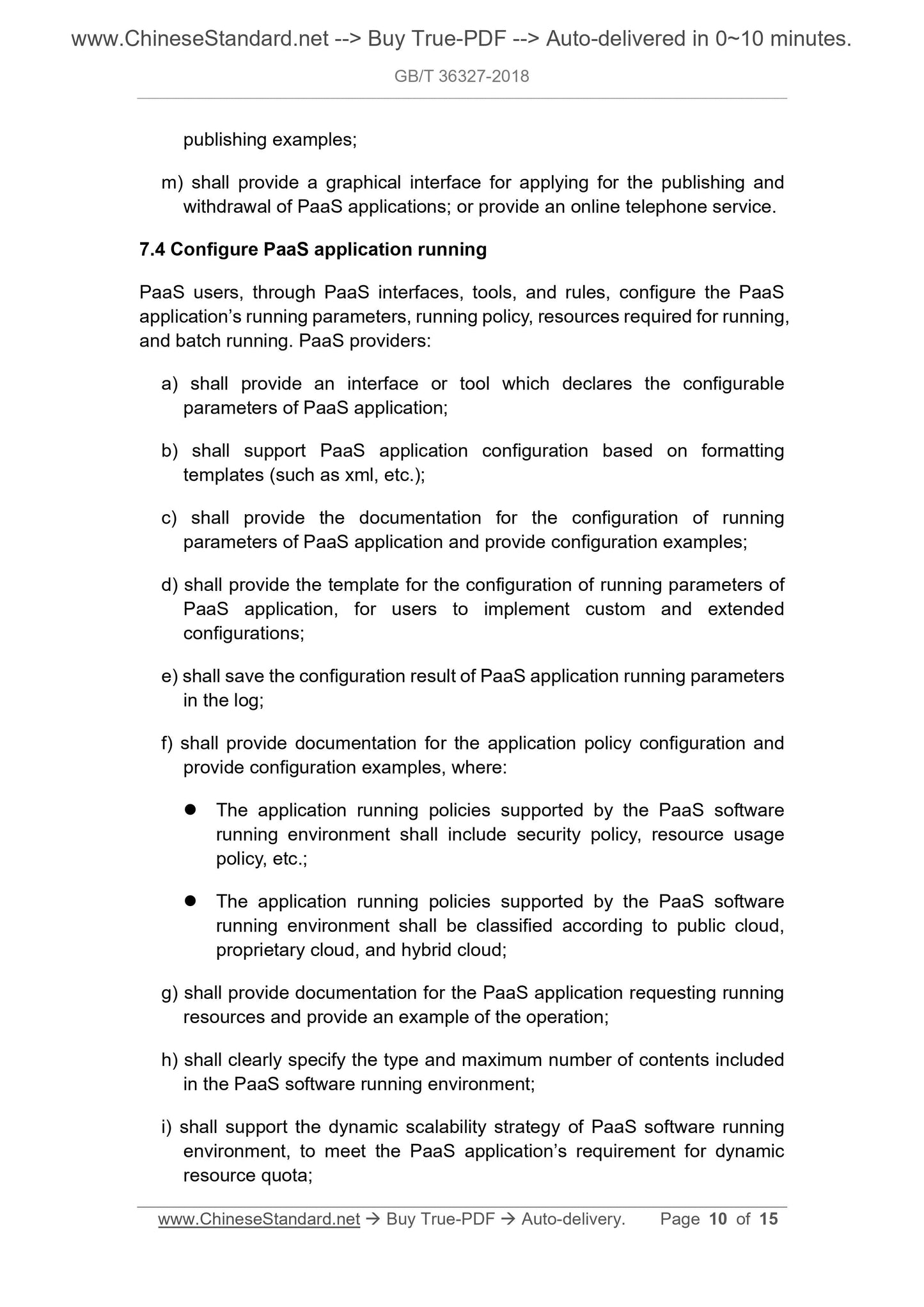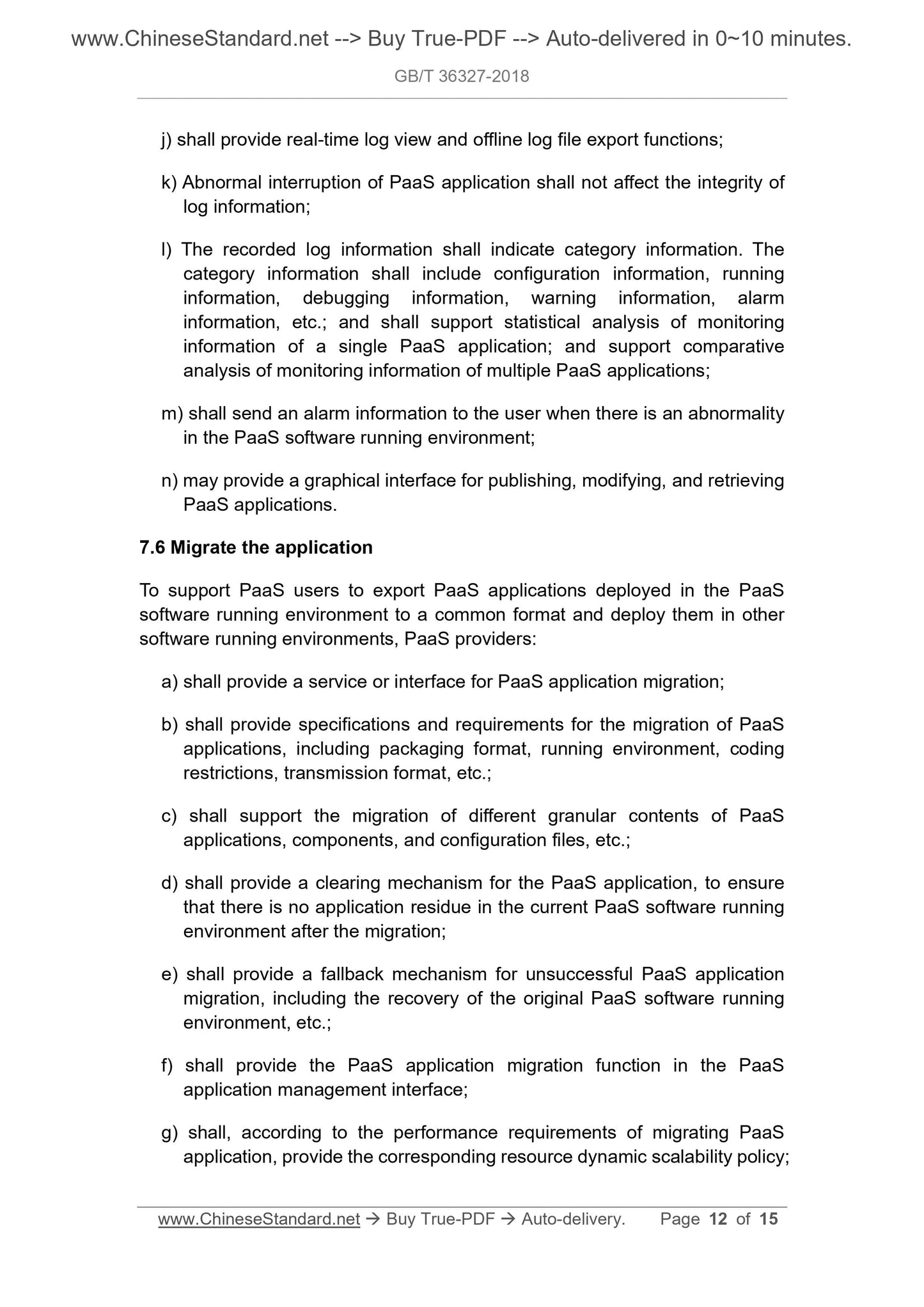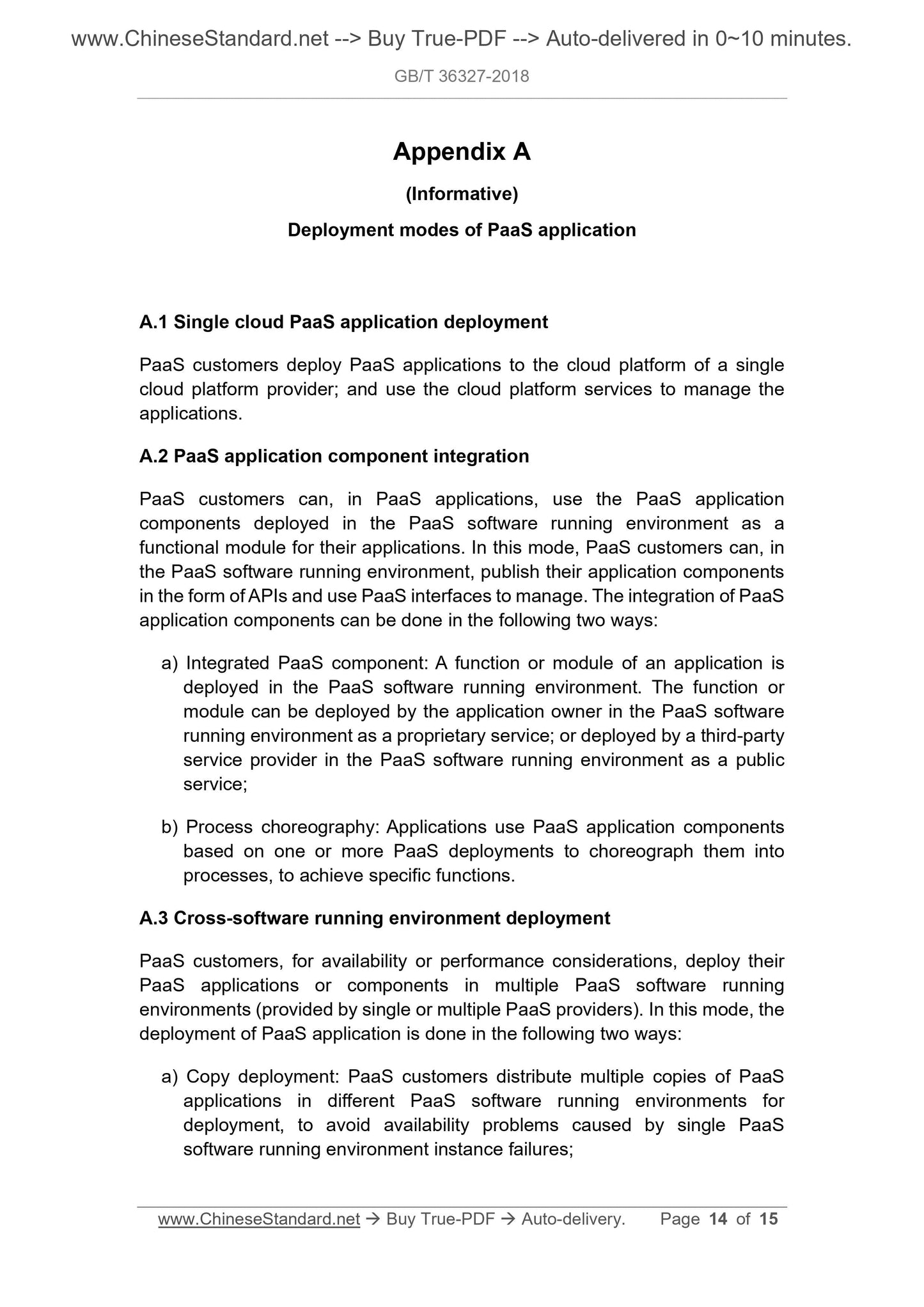1
/
of
7
www.ChineseStandard.us -- Field Test Asia Pte. Ltd.
GB/T 36327-2018 English PDF (GB/T36327-2018)
GB/T 36327-2018 English PDF (GB/T36327-2018)
Regular price
$150.00
Regular price
Sale price
$150.00
Unit price
/
per
Shipping calculated at checkout.
Couldn't load pickup availability
GB/T 36327-2018: Information technology - Cloud computing - Application management requirements with platform as a service (PaaS)
Delivery: 9 seconds. Download (and Email) true-PDF + Invoice.Get Quotation: Click GB/T 36327-2018 (Self-service in 1-minute)
Newer / historical versions: GB/T 36327-2018
Preview True-PDF
Scope
This Standard proposes a management process for the platform as a service(PaaS) application and specifies the general requirements and management
requirements for the PaaS application.
This Standard applies to service provisioning of PaaS providers related to
platform as a service (PaaS) application management; and the scenarios where
platform as a service (PaaS) customers use cloud platform services to deploy
and run applications, and where platform as a service (PaaS) collaborators,
based on the function of platform as a service (PaaS) application management,
provide third-party services.
Basic Data
| Standard ID | GB/T 36327-2018 (GB/T36327-2018) |
| Description (Translated English) | Information technology - Cloud computing - Application management requirements with platform as a service (PaaS) |
| Sector / Industry | National Standard (Recommended) |
| Classification of Chinese Standard | L79 |
| Classification of International Standard | 35.100.05 |
| Word Count Estimation | 10,117 |
| Date of Issue | 2018-06-07 |
| Date of Implementation | 2019-01-01 |
| Regulation (derived from) | National Standards Announcement No. 9 of 2018 |
| Issuing agency(ies) | State Administration for Market Regulation, China National Standardization Administration |
Share
